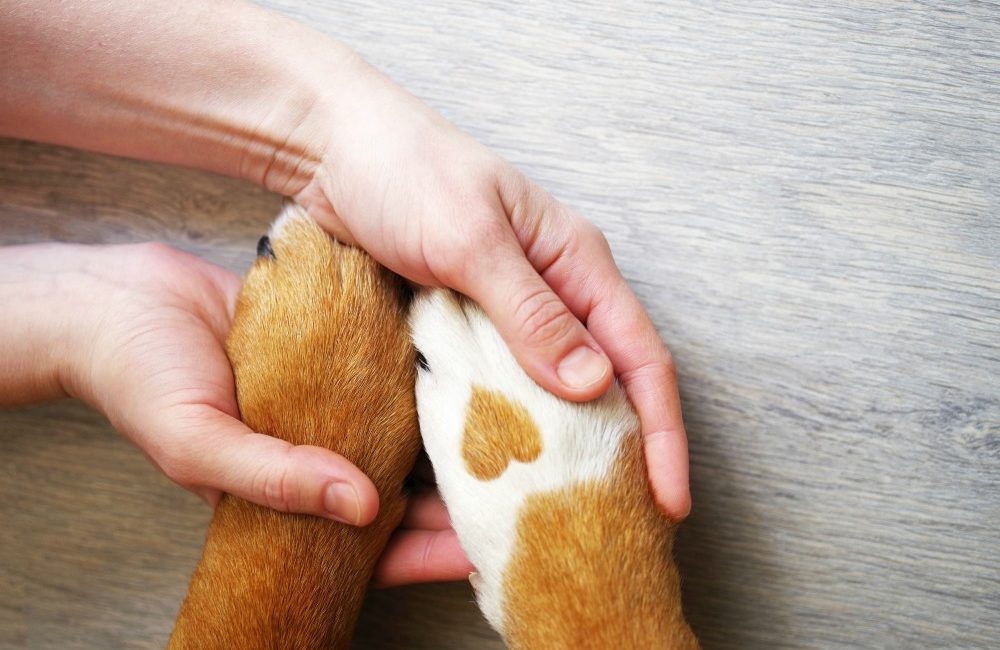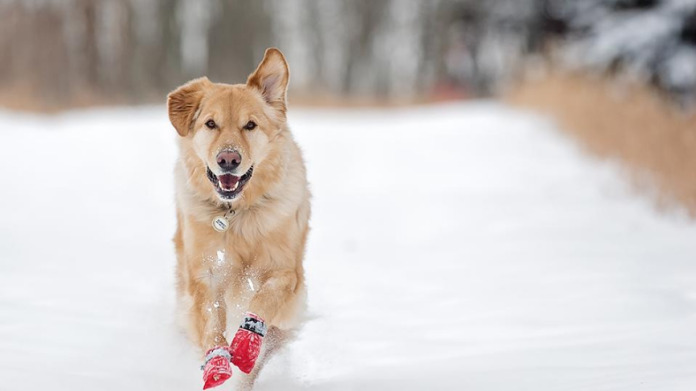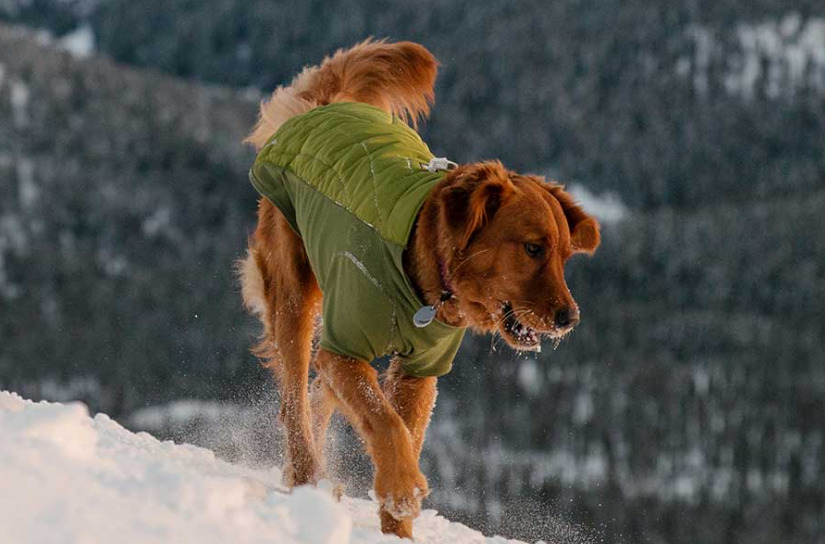
Keeps paw pads moisturized
Slather your pup’s pads in dog paw wax or paw balm before hitting the streets for a winter walk. The moisturizing balm acts as a barrier to help keep out ice and harmful chemicals.
Keep your pup hydrated
Your pet’s skin and paw pads need to stay hydrated and this can be tougher in the dry, cold winter months. Make sure your pooch has plenty of water available and bring some water on longer walks, too.
Wash your dog’s paws after walks
Dip your pup’s paws into a shallow bowl of warm water (make sure it’s not hot!), then towel dry. This will remove ice, salt, chemicals, and any other buildup their paws may have been exposed to.
Avoid deicing agents
This means steering clear of very slushy or salty areas while on your walks. Commonly used ice deicers, like calcium chloride and sodium chloride, can harm paws.
Keep walks as short as possible in harsh winter weather
Unless your pup loves running around in the cold and snow and you’re prepared for a long walk, it’s best to limit your pup’s time outdoors.
Keep your pup’s paws well-groomed
Trimming your dog’s nails will help with stable footing. And, for breeds with long fur between their toes, trimming this fur will aid with paw cleaning and make it less likely for ice balls to form between the toes.
Purchase dog boots or booties
This footgear can do an excellent job protecting your dog’s paws from salt, chemicals, ice, and other winter hazards. Plus, many are non-slip in icy conditions and keep your pup’s toes nice and dry.

Monitor your dog’s paws
Take the time on paw care: Check the pads and between the toes for redness, cracks, wounds, discoloration, or any other signs of concern. Also, take notice if your pup seems to be licking their paws a lot. Report any concerns to your veterinarian.
Keep your pet’s whole body warm
Keep your dog indoors as much as possible in cold weather, and consider a sweater or coat during walks to help retain body heat. If your dog’s core temperature is warm enough, they’re more likely to maintain healthy circulation to their paws.
